Is your kombucha not as fizzy as you would like? We’re walking through all the reasons your kombucha isn’t carbonated (and how to fix it)!
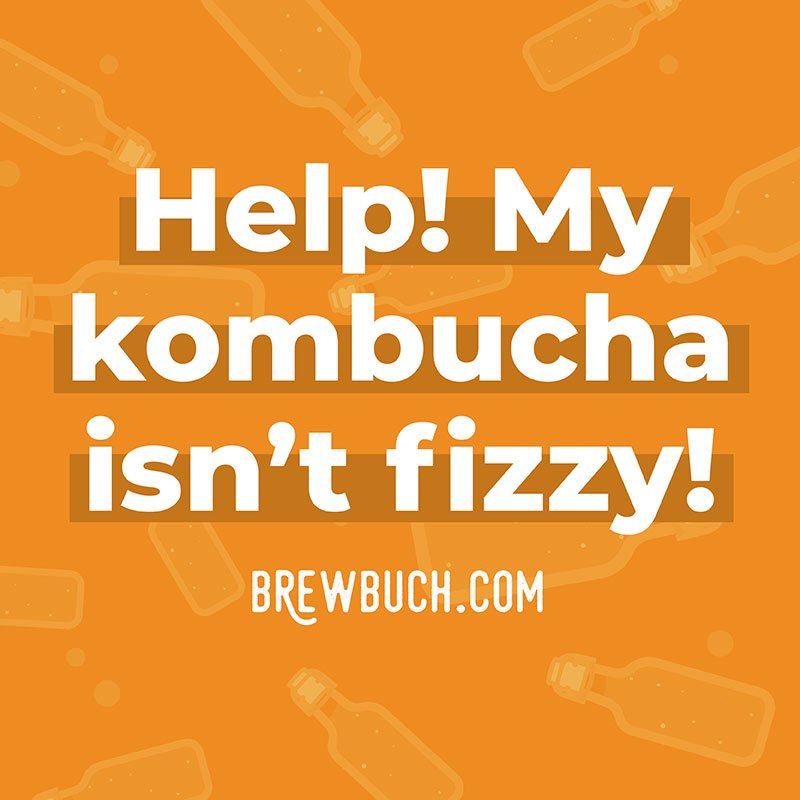
There’s nothing quite like the proud feeling of achievement when you crack open a bottle of fizzy homemade kombucha, all carbonated and bubbly and delicious. The flip side, of course, is when your kombucha isn’t fizzy and you start to wonder where you went wrong (in kombucha? in life?).
So for all the folks with a sad bottle of flat kombucha on your hands (we’ve all been there), this is your troubleshooting guide to help you achieve carbonated kombucha success!
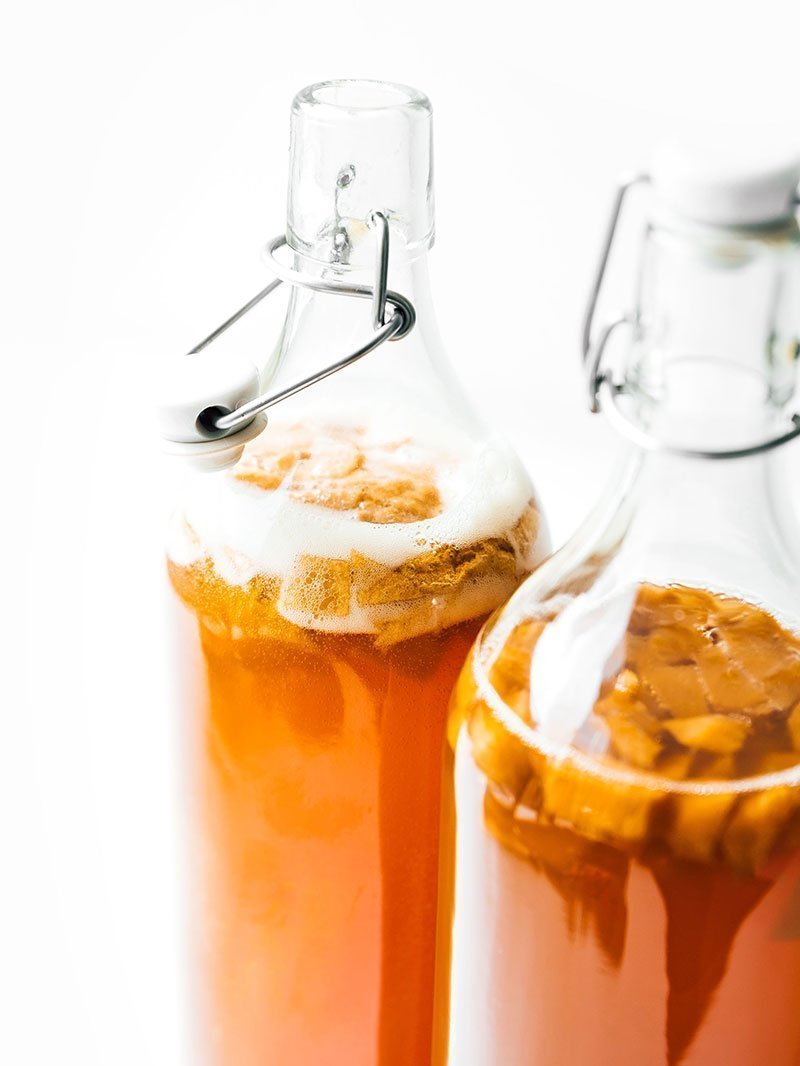
What is carbonation?
Carbonation, put simply, is carbon dioxide (CO2) dissolved in a liquid. In kombucha, the yeasts in your brew eat the sugar and use it to produce alcohol and CO2.
In the first fermentation, the kombucha is covered only with a cloth, meaning the CO2 can escape and doesn’t stay in the liquid. That’s why we do a second fermentation, sealing the kombucha in airtight bottles and trapping the CO2 in the kombucha.
This method of carbonation is called natural carbonation. Another method is called forced carbonation, and this is when machines are used to artificially add carbonation to a drink. Drinks with forced carbonation include carbonated water, soda, and even most store bought kombucha.
While natural carbonation produces a soft feeling, with smaller bubbles and less tingle, forced carbonation is just the opposite. Forced carbonated drinks are usually sharp feeling, with large, uniform bubbles. This is an important distinction, in that you should not expect your home brewed kombucha to have the carbonated feeling of a soft drink.
With that said, you can make some seriously carbonated and fizzy kombucha. Here’s how!
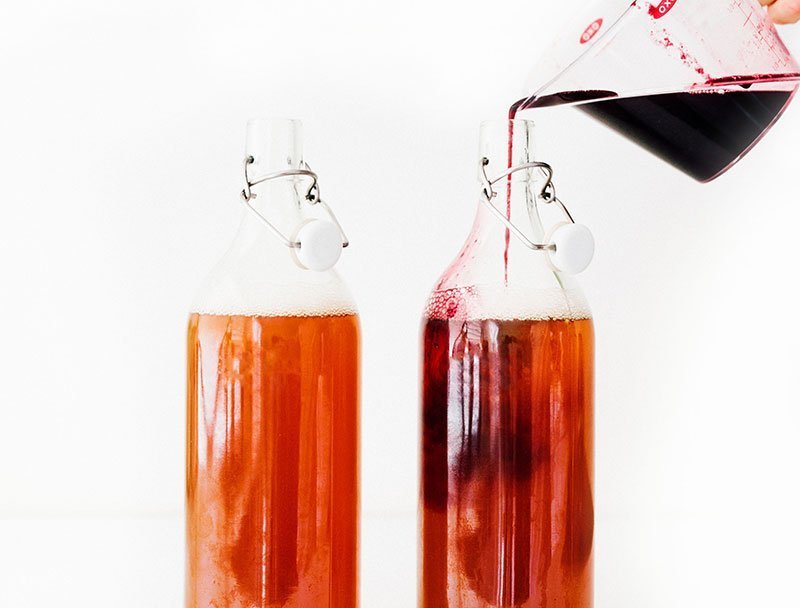
How to carbonate kombucha
To carbonate kombucha, you’ll essentially just transfer your uncarbonated kombucha into airtight bottles, add something sweet as “food”, seal shut, then wait for the bacteria and yeasts to work their magic!
While some carbonation does occur in the first fermentation (the SCOBY can create a light seal, trapping a little fizz in the brew), most of it occurs in the second fermentation Read more about how to brew kombucha here.
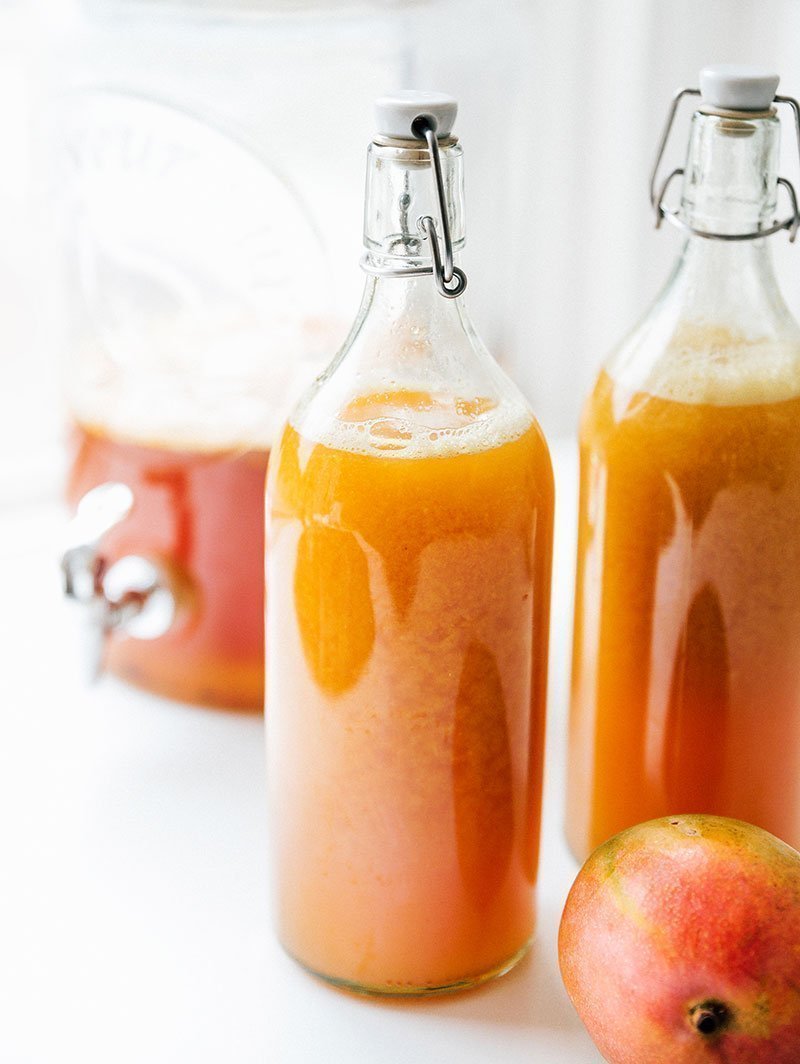
So why isn’t my kombucha fizzy?
This brings us to our question of the hour – why isn’t your kombucha fizzy? This is one of the most common questions we get in our kombucha Facebook group. There are numerous reasons why your kombucha might not have carbonation:
1. You’re not using the right bottles.
You need to use fermentation grade bottles to brew kombucha, as these are specifically designed to not only trap air in, but withstand the pressure build up without exploding or leaking. These flip top bottles and these bottles are both great. For the best buch, avoid decorative bottles and mason jars.
2. You need to adjust your first fermentation time.
Your first fermentation needs to run long enough that there are plenty of bacteria and yeasts built up in the kombucha – these power the carbonation reaction. On the other hand, you should ensure your first fermentation isn’t going so long that your kombucha tastes sour/vinegary – there needs to be some sugar left for the yeast to feed on to help power the carbonation.
3. You’re not letting the second fermentation go long enough.
This one is simple; you may just need to let it (second) ferment longer! A typical second fermentation takes 3 to 10 days, but this could take more time depending on the sugar content and temperature of your house.
4. Your fermentation station is too cold.
Fermentation slows down dramatically when the environment is cold. Ensure your kombucha bottles are somewhere relatively warm (68-78°F). For the winter months, this might mean investing in kombucha heating pads, or finding a warm area in your house (e.g. above the fridge, by a heater, or in the laundry room). Read more on ideal kombucha temperatures here.
5. You’re leaving too much air in the bottles.
It’s important to leave some head space (empty space) at the top of the bottles before sealing, which will act as a buffer for the pressure (and in turn prevent explosions). With that said, if you leave too much head space, the CO2 simply stays in the air inside the bottle rather than going into the kombucha, resulting in less fizz. Aim for about 1 to 2 inches of head space (this entirely depends on the bottle shape and size, so you may need to adjust as you settle into a fermentation routine).
6. You’re not stirring the kombucha before bottling.
If you’re pouring the kombucha straight from the fermentation jug into the bottles (and especially if you’re using a spigot, like in continuous brewing), then the bacteria and yeast are not being evenly distributed into the bottles. Be sure to give your kombucha a stir before bottling so that every jar can be equally full of that live yeast and bacteria power! This also mixes oxygen into the kombucha, which helps to stimulate the process of carbonation.
7. You’re filtering the kombucha before bottling.
By all means, filter the gunk out of the kombucha after the second fermentation, but not before! You want to get all those brown stringy bits (the yeast!) into your second fermentation bottles as well. These will do wonders for the carbonation and fizz.
8. Your tea isn’t strong enough.
It could be that your first fermentation brew just isn’t strong enough. Either add a few more bags of tea, or let the tea steep for longer to infuse your brew with more “food” for the bacteria and yeast.
9. You’re not adding fruit or sugar.
Adding mashed fruits, juices, sugar, or honey not only add flavor, but they are instrumental in carbonating your kombucha. They act as “food” sparking the reaction that creates carbonation. (Pro tip: for maximum fizz, add ginger!) See our favorite kombucha flavors here!
10. You’re burping the bottles too much.
I get it, the idea of a bottle exploding is a little scary (and cleaning up the mess that results? even more so). But if you’re burping your bottles daily to avoid potential catastrophe, you may be doing a disservice to your carbonation. Try holding off on burping your second fermentation bottles for 2 or 3 days if you’re having issues with kombucha not carbonating. (Worried about explosions? Grab a few of these carbonation caps to allow out excess pressure!)
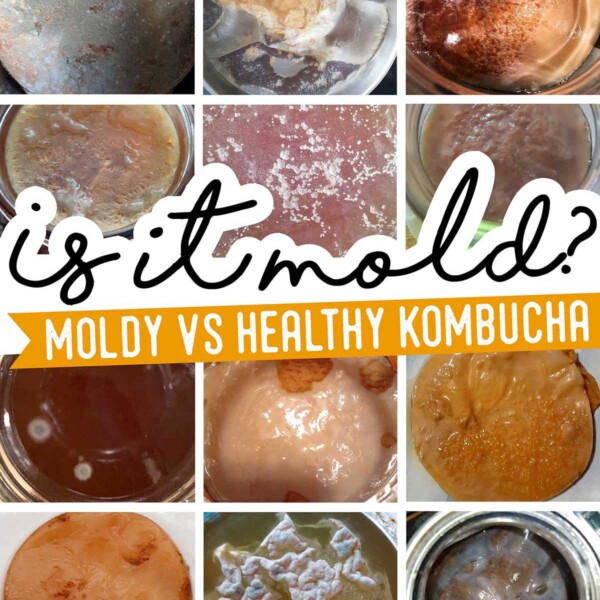
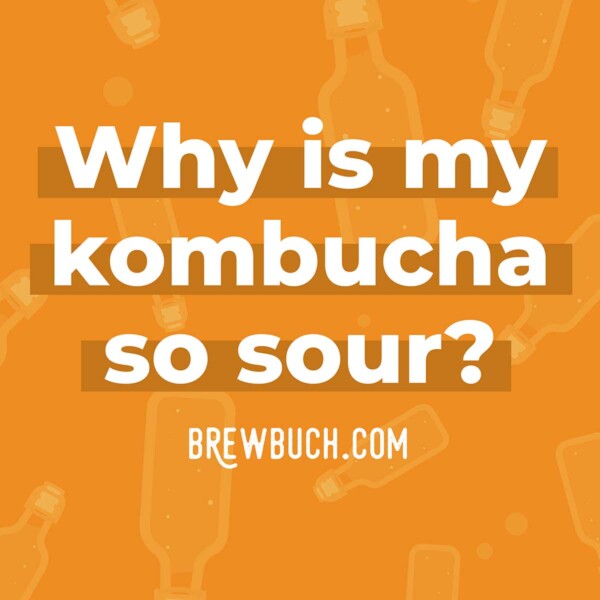
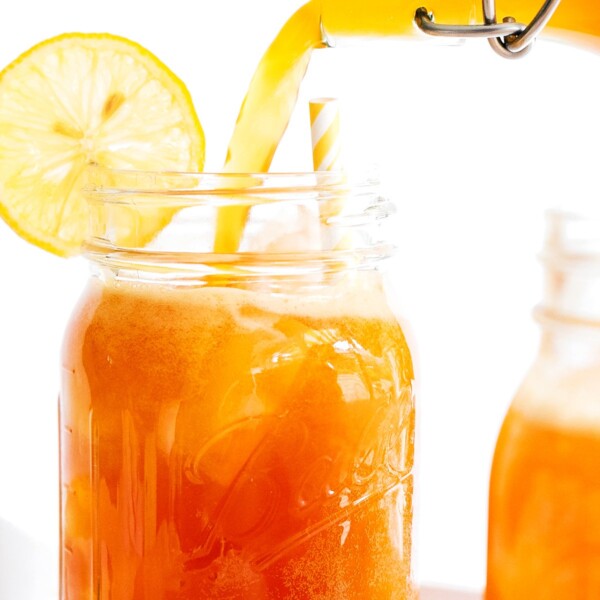
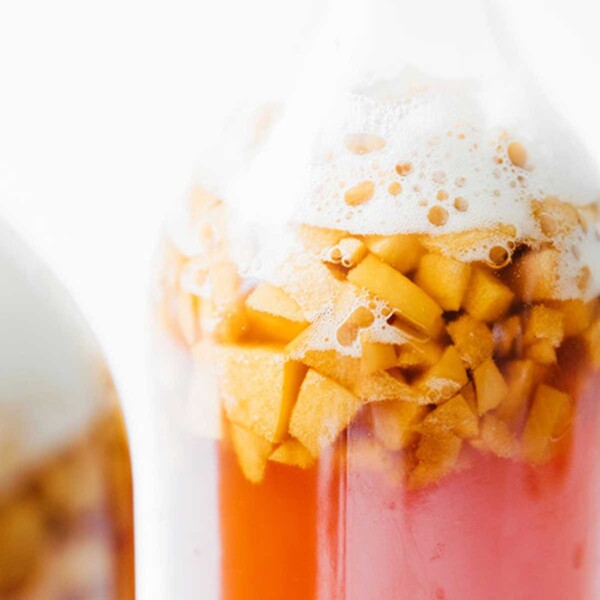
I bottled some kombucha two days ago, but so far it appears no gas is being produced. I added 165g of guava puree to each of two 48 oz bottles and filled to within 2 inches of the top. This is my first batch with this SCOBY, so not sure of the health of my culture at this point. I checked the pH of the batch about two days before bottling and it was 3.1, so it at least seems like the bacterial culture is healthy and doing its thing.
Could it be that the yeast culture is just not very strong yet? Am I just being impatient and it takes a little while for the yeast to get going? If it does not carbonate, what are your thoughts on adding a little dry champagne yeast? Any tips on strengthening the yeast culture of my SCOBY?
Love your site and definitely appreciate any help you may have.
It could be that your culture isn’t potent enough yet. And be sure those bottles are fermentation grade so that they capture all the gas that may be being produced!
Hi! Could a reason my second ferment isn’t fizzy is because my first ferment went too long? I do continuous brew and sometimes I wait a long time after feeding to bottle for the second ferment. Like over a month. If the first ferment is too vinegary would that harm the second ferment? Or should I just add more sugar/food? Thanks:)
If you just add more sugar/food then it should be fine! 😀
My flavoring for second ferment was dried & sweetened cranberries, 1 tablespoon of orange juice & crushed cloves. Not very fizzy. Any ideas? Thank you.
Hmm that sounds like if would have worked well, so I would troubleshoot with the ideas listed in this article. Sounds like a tasty flavor! 😀
2 questions – one can you ONLY use sugar? I know you need something for the scoby to feed from but would honey be ok? Especialy in the 2nd ferment? Also can you use decaf tea? Lastly my end result was not carbonated so I added some cider vinager and sugar let see
1. Honey is not okay – only use sugar (more on best sugars to use here)
2. Decaf isn’t recommended, but can be done (more on decaf in kombucha here)
Happy brewing! 😀
My second fermentation is not fizzy after leaving it outside for 4 days …and when i strain it with a strainer its very watery …any suggestions….im too worried .
Hi Monika, did you try troubleshooting with the ideas in this post? If it’s watery you might try using stronger tea next time! 😀
When my kombucha is too fizzy on second brew when I open it. I make sure I wash the bottle before I open it under some water in the sink. The I take at least a 2 cup measuring cup and set my bottle in it then and open slowly let the fizz fill up in your measuring cup until it stops fizzing enough that you can take the cap off then all you need to do is pour it back in your bottle to enjoy and no lost product. But you have to open slowly and don’t take cap all the way off at first until the pressure subsides
I am on maybe my 4th batch and just bottle it a few hours ago. I realized I had forgotten to add a little sweetener – I use ginger and turmeric and only a tiny additional sweetener as I like very spicy, fizzy kombucha. One bottle popped and fizzed out half of the Buch and the second larger bottle did nothing. It was very strange. They both came from the same batch, which i stirred before bottling, and are in the same type of bottle (only i have two different sizes for experimenting; fliptop airtight bottles) and they both had ginger and turmeric; the one that fizzed over has 1 juice from 1 Pica lime (IDK what these are in N Amer as I’m in S Amer where these tiny yet powerfully strong tasting limes are the most common type). I have used all of these ingredients before except this batch i used fresh turmeric as it’s hit or miss as to whether I can find fresh. Maybe I put too much ginger in the smaller bottle that fizzed over? But only 3 hours after bottling?! What happened?!?! Even after 3 days of the second fermentation i sometimes don’t get a good pop and fizzso this was weird!
Ginger can certainly cause there to be a lot of fizz! Sounds delish though!
Hi
This is my first time making kombucha very exciting! Instead of pouring kombucha in to bottles for last fermentation/carbonation can I just remove the muslin and scoby from my 2 gallon dispenser and seal with the attached rubber seal lid. Then just use drinks dispenser and pour in to glasses. Or do you advise using bottles for preserving? Thank you.
Hi Sharon! I recommend you use flip top bottles, which are meant to hold in more carbonation. Adding the flavors to the large dispenser will give it a nice flavor, but you probably own’t get much carbonation (+ you would have to find somewhere else to house your SCOBY in the meantime).
Thank you for this post! My second fermentation is not fizzy ????. If I take it out of refrigeration and put it back in a warm place for a longer period of time, is that OK?
Yep, that’s a good starting point! 😀
Hiya I’ve been making kombucha for a few years and after reading all your wonderful tips I can see why mine is not fizzy on second fermentation….I read that second fermentation only took 2 days – I will leave it longer and get some fizz…..I still enjoy drinking mine not so fizzy….thank you and happy kombucha making x